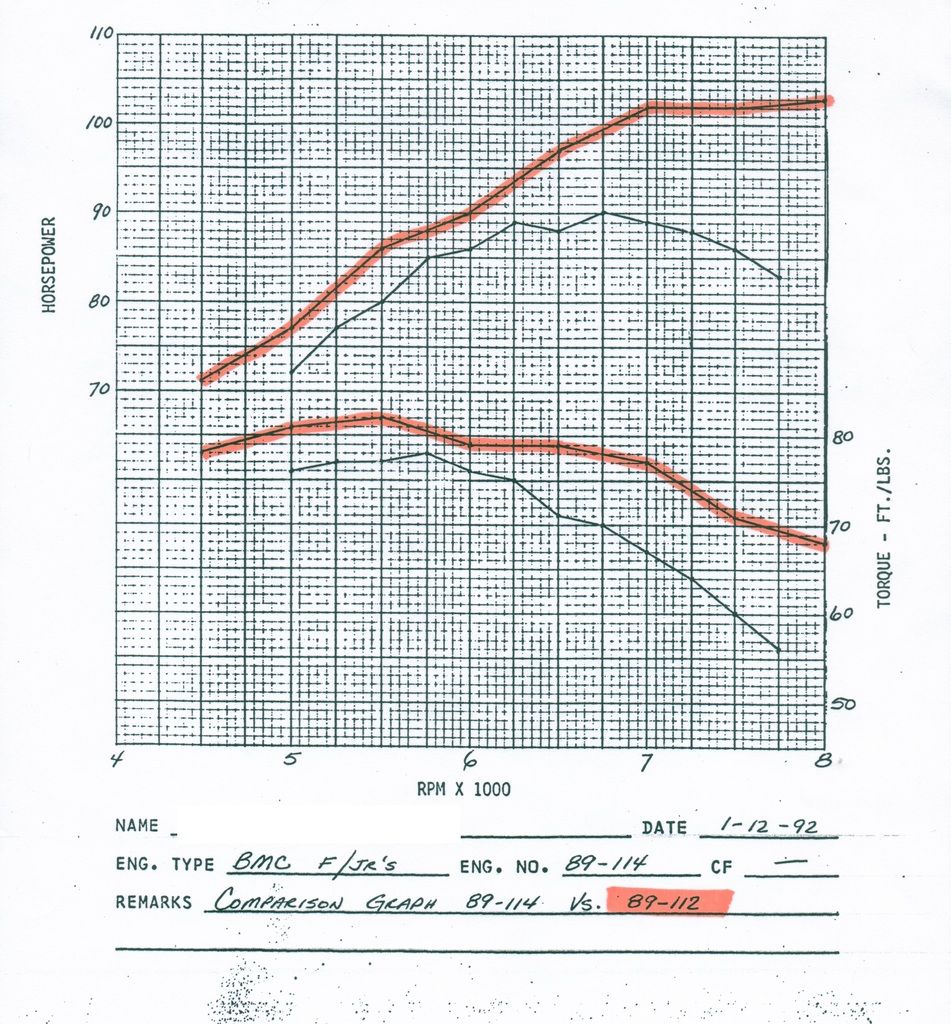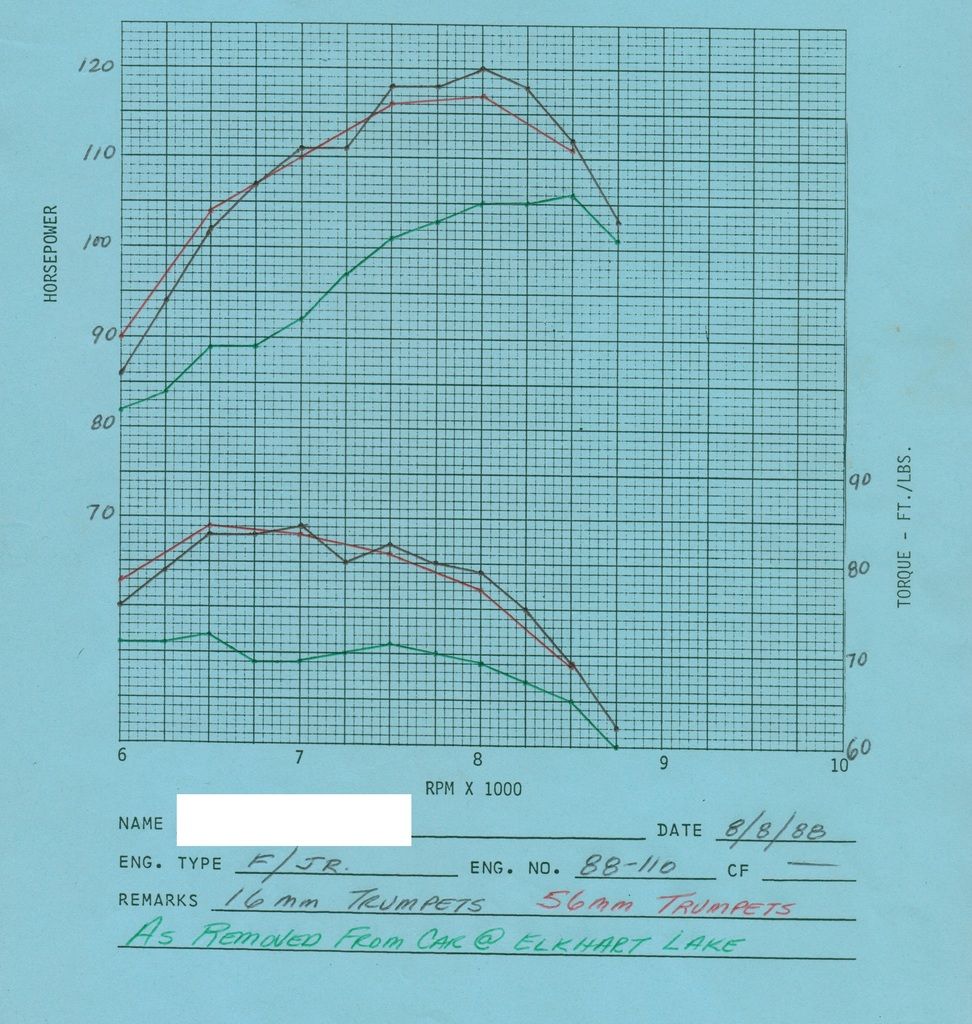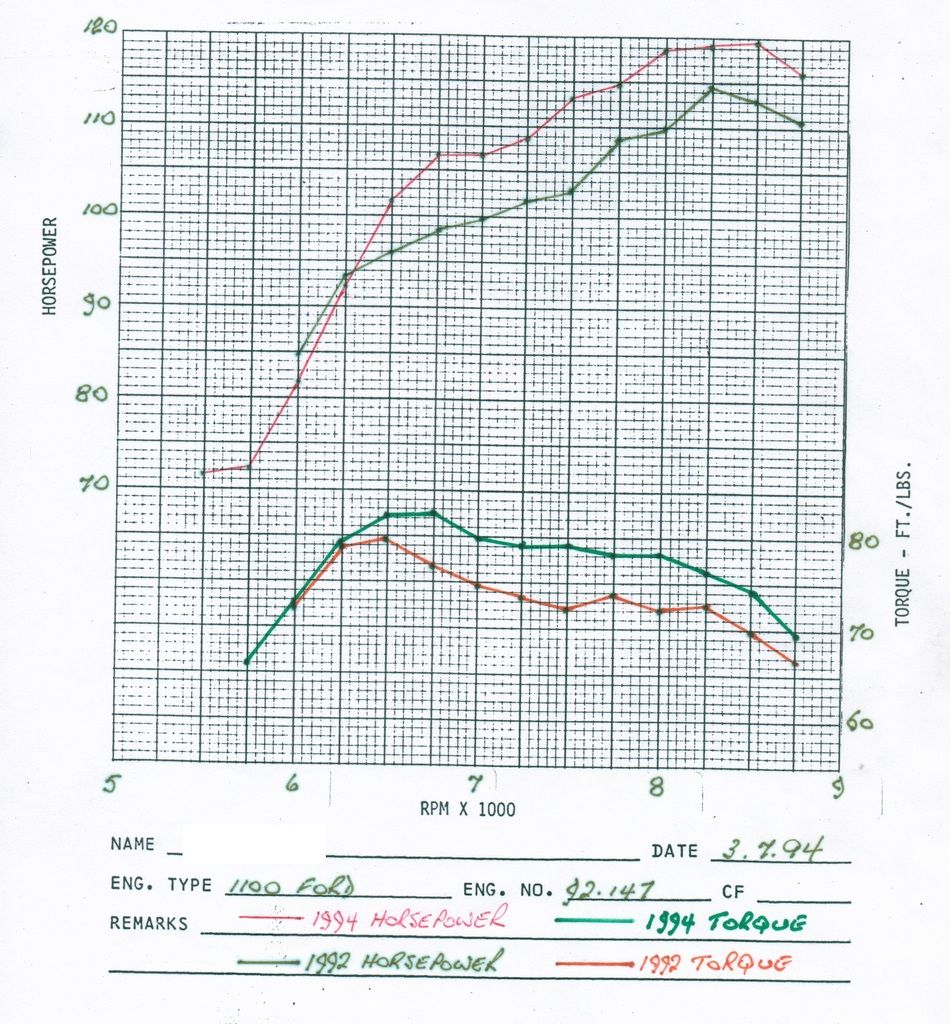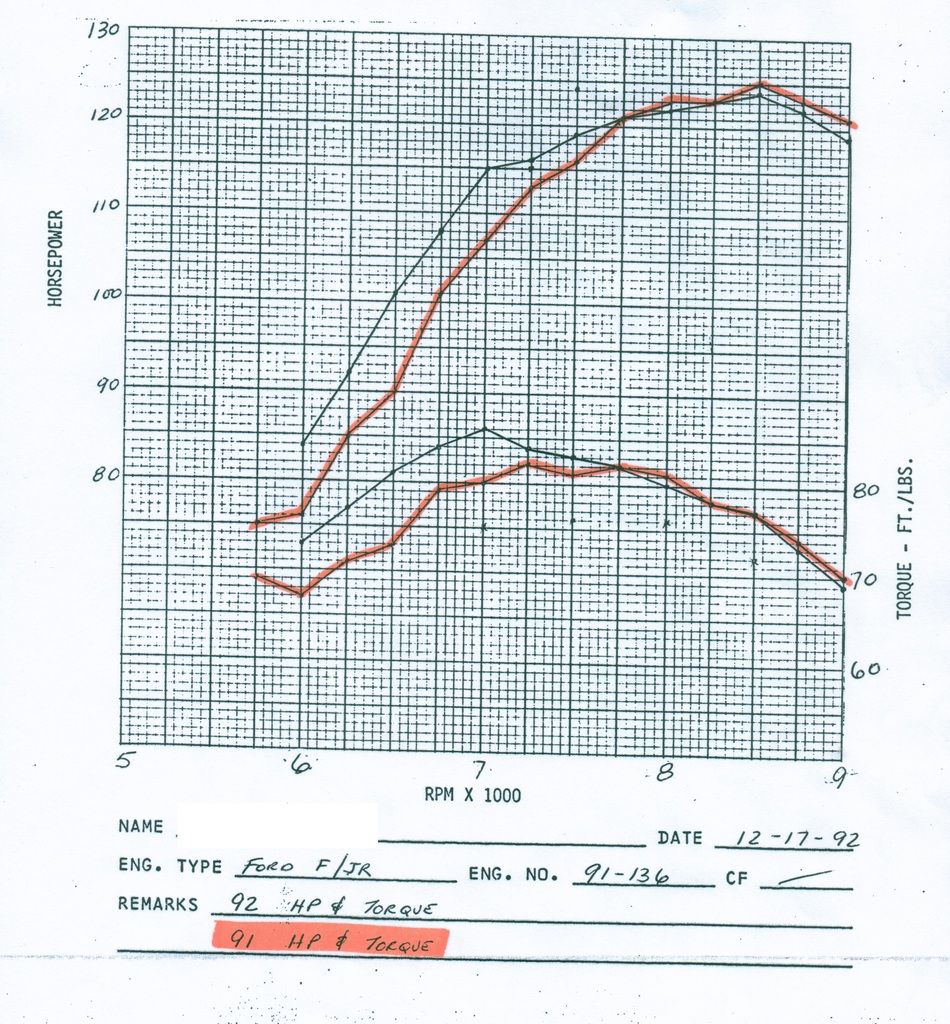Sorry guys, no goat or lemming pics tonight, just pics on topic. Ie, racing engine engineering.
midget, et all,
Below are output graphs of engines I engineered/built/machined/etc, a long, long time ago in a galaxy far, far away . . . . . . .
They are spaced out individually so you can use your screen zoom to enlarge them and keep the comments in order. As per usual, readers get to supply their own brain cooling, if required . . . . . . . .

I'm more optimisty about the new Rover 4V being able to produce the goal Tq of 82/83 ft/lbs, now that I have dug out this info. Several of these 2V non-crossflow engines produced ft/lbs of Tq in the mid 80's, with one exceptional example producing 86 ft/lbs. Even one of the BMC examples produced 82 ft/lbs. I believe all the examples are ~1098 cc's displacement. The BMCs are 5 port, the Fords are 8 port. I'll need to calculate the Bmep and V/E for the samples later, but the 99? cc Rover 4V should produce similar Tq, perhaps with a wider, flatter range. Some of the graphed examples are pretty well developed though . . . . . . Engines from my shop dominated North American Vintage Formula Junior back then. We were probably the only shop doing any serious development on this side of the pond . . . . . .
BMC's ~ 1098 cc1070 S based
 Ford 1099 cc
Ford 1099 cc105E based
 Ford 1099 cc
Ford 1099 cc105E based
 Ford 1099 cc
Ford 1099 cc105E based

Chris, this should allay your fears about 1 liter, short stroke engines not being able to produce enough torque. The Ford based engines used a stroke of 48.4 mm, shorter than what is planned for the Rover.

Fordboy